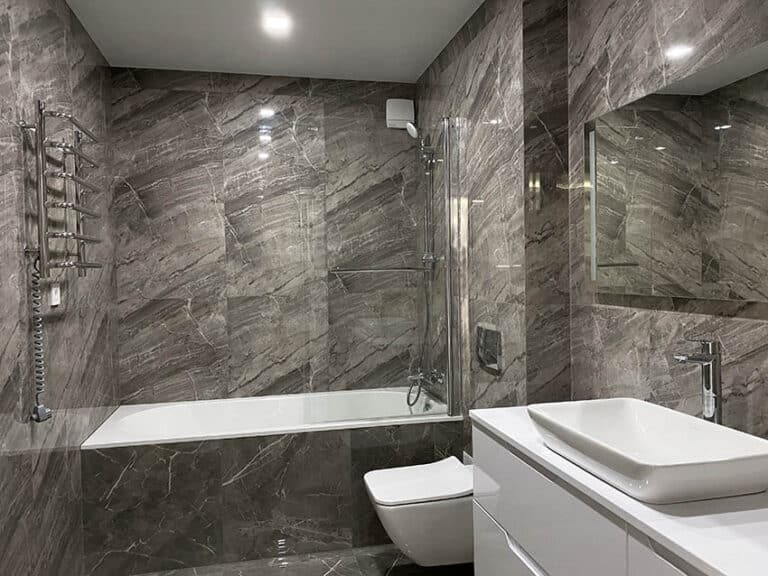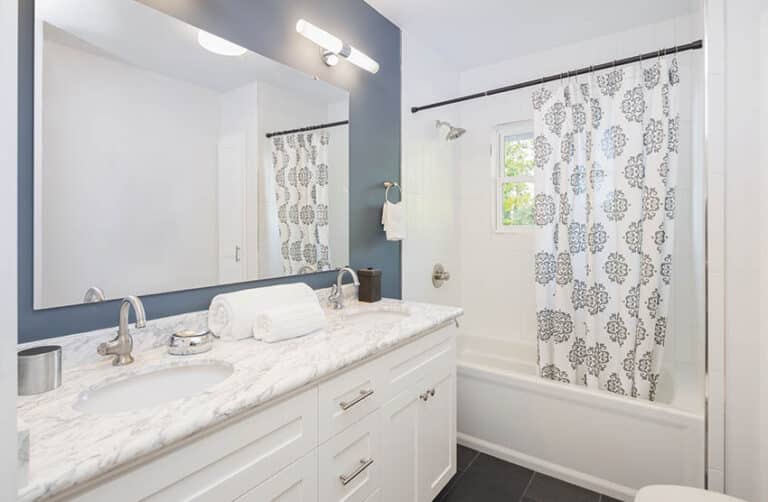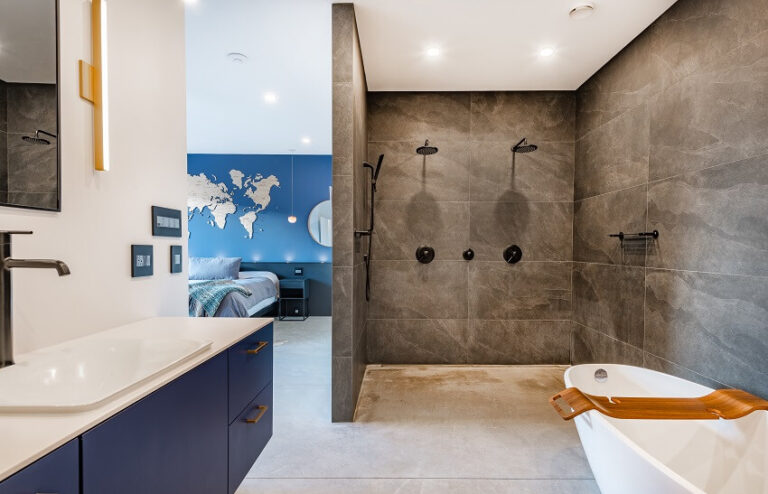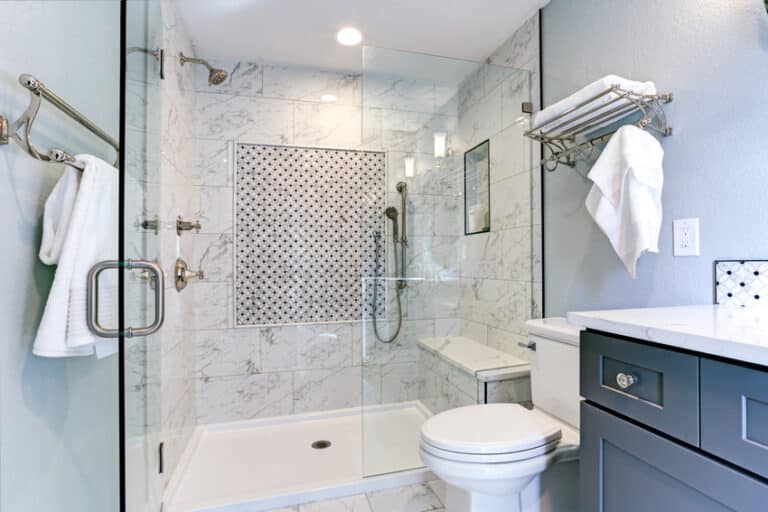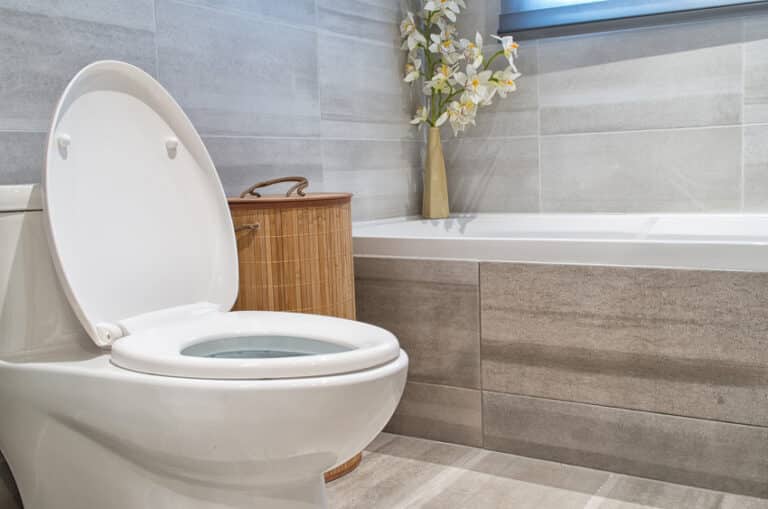Should You Consider A River Rock Shower Floor?
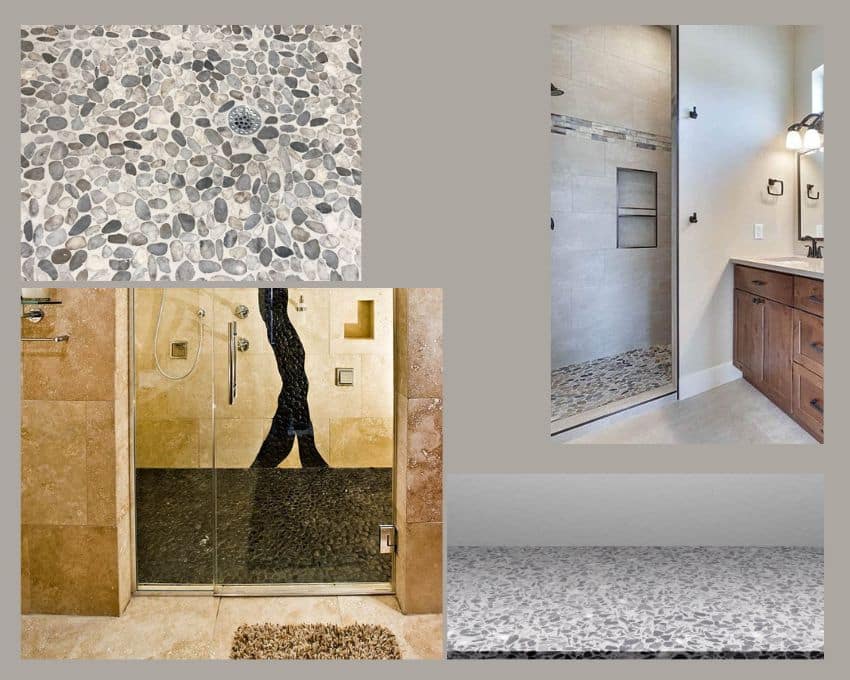
A river rock shower floor can be an alluring design element that gives a bathroom a spa-like feel. Rather than using individual river rocks for the flooring they often come in tile sheets. This makes them easier to clean and maintain and provides a cohesive floor pattern for your bathroom shower. River rock flooring is also nicknamed epoxy stone flooring. By simple definition, it basically refers to a high-quality blend of epoxy and other types of decorative stones or pebbles.
What’s really great about this particular type of flooring option is that it can cover basically any type of concrete surface out there. It is something that can work either indoors or outdoors. It’s also a great way to update existing flooring options that might be cracked, damaged, or chipped in some areas. One appeal that river rock flooring can provide is that it’s versatile. It can be used for the basement floors, for the outdoor patio, for the laundry room, and yes, even for the bathroom. It provides a very unique and uniform feel to it that other flooring options are challenged to provide.
This type of flooring can update and beautify even the most uneven and undecorated concrete surfaces and should always turn out to be something that an enterprising homeowner should always keep in mind by way of flooring options. River rock flooring allows the water to run through without jeopardizing the overall flooring structure. This makes it an excellent option for the bathroom shower floor.
It’s great for eliminating puddles of water or dealing with standing water , which is usually the challenge that is oftentimes seen in shower flooring options. Popular colors for these stones include blue, green, white, and gray. They can be found in small or large smooth or natural varieties depending on your river rock style preferences.
River Rock Tile For Showers
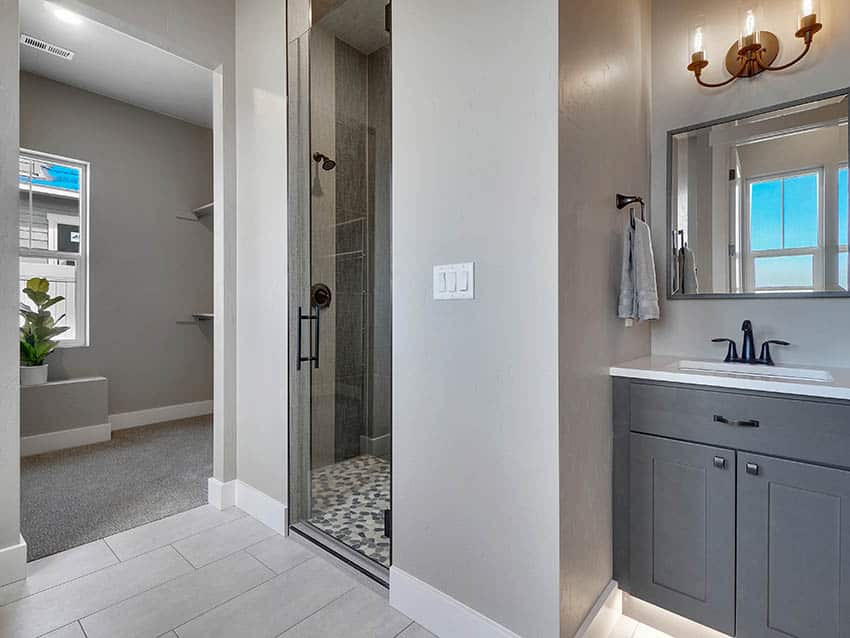
One major challenge that can be seen in walk-in shower floors in general is that they can turn out to be quite slippery and can eventually cause a lot of accidents and by the long stretch, certain injuries. River rock tiles used in showers can help prevent that. The embossed surface provides traction, effectively avoiding any slips or accidents for people stepping in or out of the enclosure in the long run. There are a few things to keep in mind though, if river rock is ever considered a tiling option for the shower floor.
For starters, it’s that the pebbles are irregularly shaped. They need to be laid out in mosaics and the edges are not exact. This makes its installation very tricky to accomplish. Grout needs to be used generously. It is absolutely for proper river rock tile installation. It’s also important to note that the stall floor needs to be sloped down towards the drain. This is so that water retention will not be an issue and the tiles will last longer and will attain minimal damage and degradation over time.
Instead of a traditional look, the homeowners decided to add a little Asian flair. Authentic shaved river rock, embedded into the gently sloping floor, runs straight into the glass-enclosed showers without being interrupted by a lip. “We wanted a soothing yet exotic ambience,” said one of the homeowners. – Mervyn Kaufman. Easy Home Makeovers: “Before” and “After” Transformations for Any Living Space. United States: Filipacchi Publishing, 2007.
Using A Pebble Floor Sealer
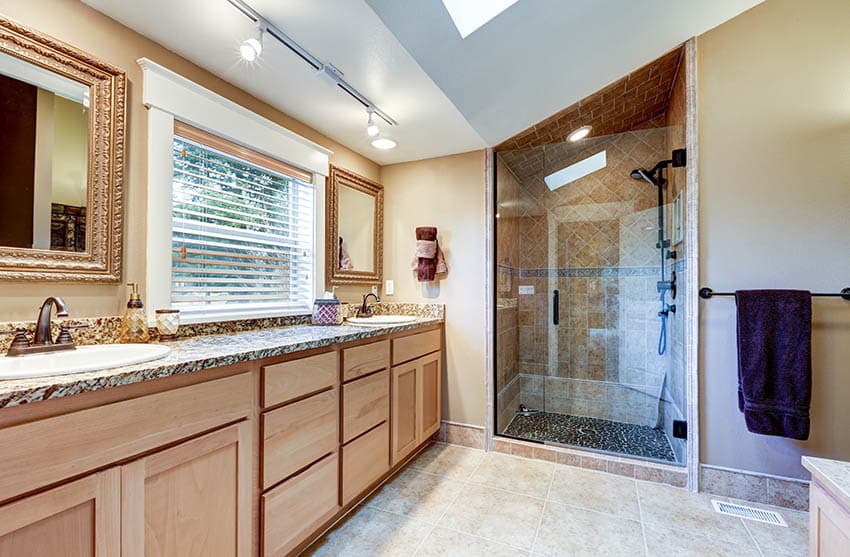
Previously, it’s been mentioned that grout (lots and lots of it), is critical to successfully getting river rock flooring installed for the shower floors. This is mainly due to its irregular shape and ability to trap water in because of its uneven surface. The next obvious step would have to be applying sealer so that the enclosure floor is basically waterproof.
Using a sealer to finish off the river rock tile floor look is critical for the future of the said flooring. There are a lot of benefits to ensuring that this hard and soft step isn’t skipped. To begin with, it helps to retain the color of the original stones better, providing a warm and stylish experience.
Water that flows through bathrooms is technically considered as processed water and there might be minerals and other substances in it that might turn out to damage the overall quality of the tiles over time. Applying a sealer helps prevent that as the rocks have an extra layer of protection. Additionally, using bath products and accessories made from materials that won’t damage the tiles can also prolong their lifespan.
The recommendation is to seal the river rock floors twice. The first application is before the grout is applied and the second one is after that layer of grout is applied. This extra coat further protects the stones or pebbles and it also makes sure that the grout stays in longer under its protective layer. Once this last step has been applied, the shower floors are now ready to be stepped into and be exposed to running water.
Best Grout For Rock Floor in the Shower
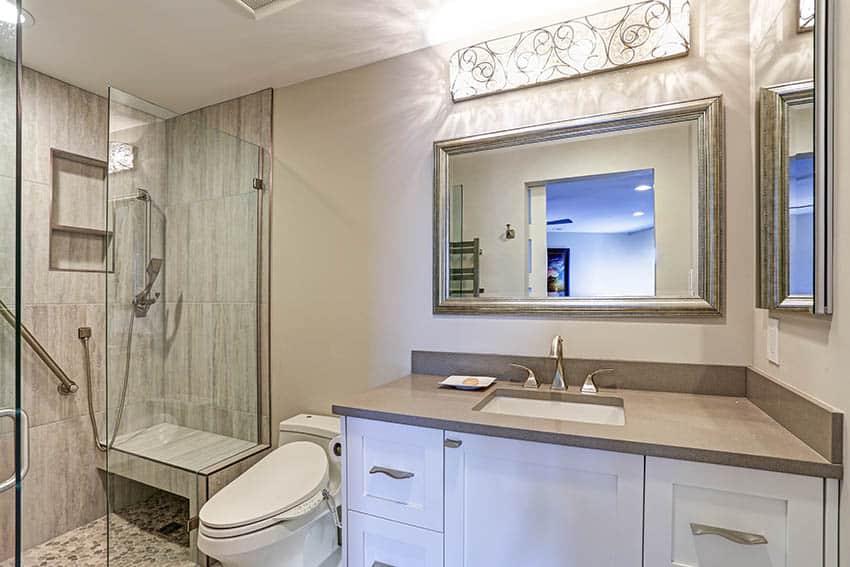
Truth be told, choosing the type of river rock tiles for the shower floor is the easy part. Picking the grout is the real challenge. And this is something that even professional developers and contractors constantly struggle with. When opting for a river rock floors; it is important to remember that the grout is everything. There will be a lot of it needed.
There are 2 main categories for grouts that can be paired with river rock shower floors: sanded and unsanded.
Sanded grout, to start off, gets its name from its basic composition. It is basically held together by particles of sand. The sand works as a strengthener as it stays suspended as the grout cures; lending it ore strength and structural stability. It is cheap and has a gritty texture. It also makes for very inexpensive grouting options.
Unsanded grout, on the other hand, provides greater stability. This variety of grout is something that is much smoother in texture mainly because of the absence of sand in its composition.
Despite its obvious advantages compared to the sanded grout variety though, it’s worth noting that this type of grout is far more expensive. This is because the polymers used are pricier and a lot of bonding agent is required to cover the surface area of the shower’s floor if river rock pebbles are used. [Source: washingtonpost.com Tips for Installing and Cleaning a Pebble-stone Shower Floor]
Potential Pebble Flooring Problems
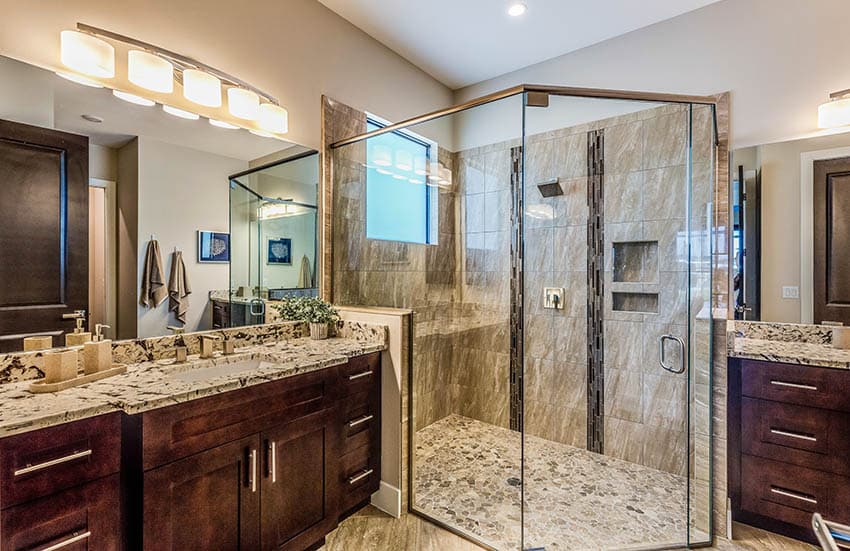
· Water draining: River rock pebbles cannot drain water properly, leading to water staying lodged in between pebbles instead of going down the drain. To counter this issue, using a dry installation style can help with water drainage.
· Water retention: Water retention leads to wet grout or grout decay, which may lead to mildew and mold. Flat or sliced pebbles limit indentations while still providing some texture.
· Installation: Customized sizes need to be laid out with immense care, making installation tricky and expensive.
· Sealing: Two layers of sealant are required upon installation, with an annual reapplication advised to maintain quality when maintaining river rock for the shower floors.
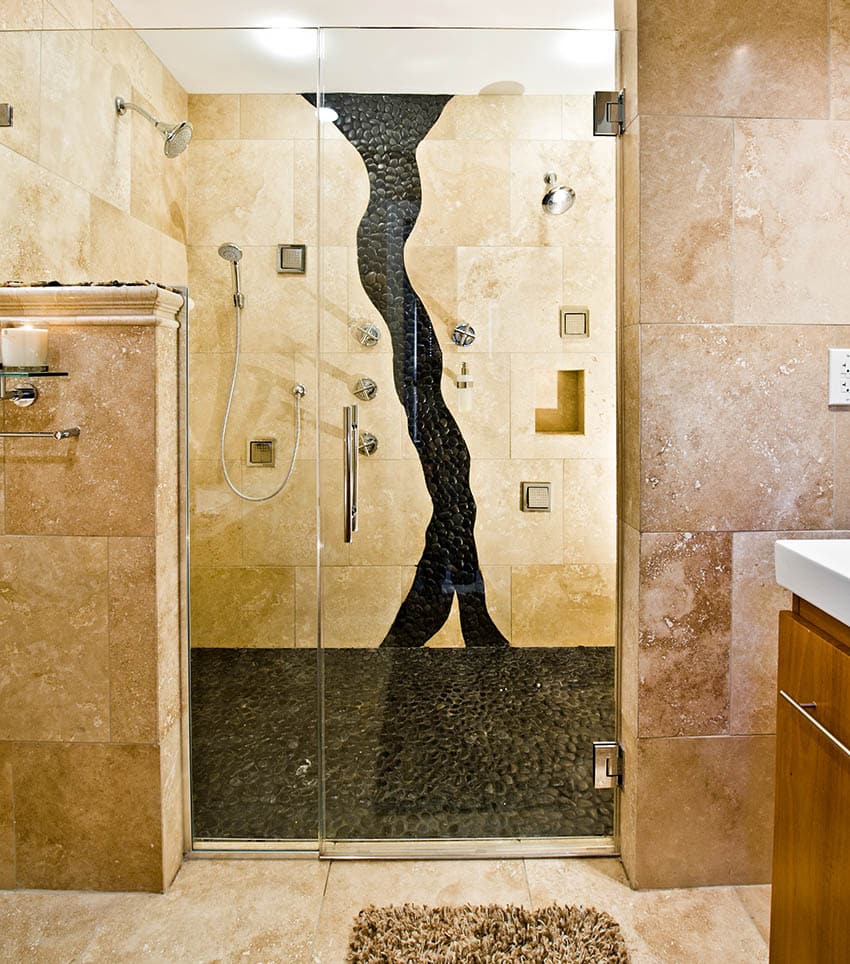
Despite its beauty and practicality, river rock floors can come with problems. Its main one is the water draining issues it comes along with. These types of pebbles cannot drain water properly, and water is a constant on the shower floors. It has the tendency to get the water to stay lodged in between the pebbles instead of going down the drain, as it should. As water sits it can affect the finish, grout, and overall durability.
Water retention leads to wet grout or grout decay which may lead to mildew and mold. This is why there are flat or sliced pebbles that limit the indentations a little bit while still providing some texture.
Installation can also be very tricky and expensive as the sizes need to be customized and laid out with immense care. And then of course, there’s the need for wet mortar to adhere when installing the tiles and sealing requirement. Upon installation, there are two layers of sealant required. Installers usually advise that when maintaining river rock for the shower floors, an annual reapplication of the sealant would be best to retain its quality.
For more content like this visit our gallery of pebble tile shower floors here.

